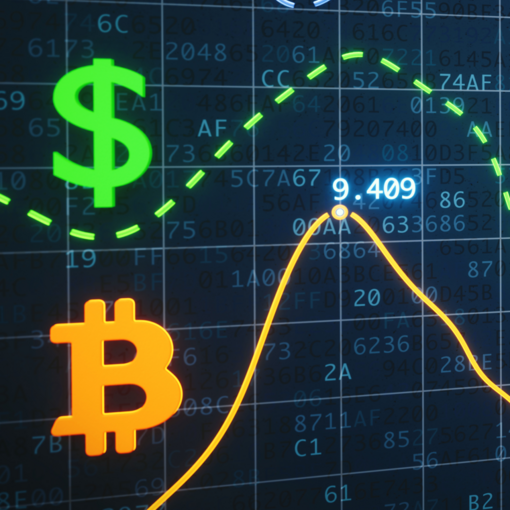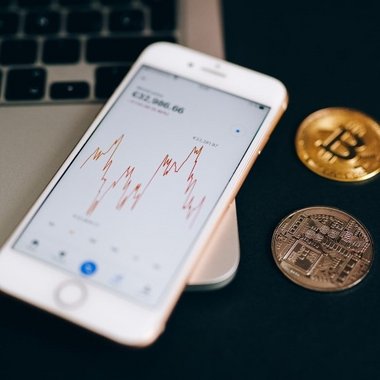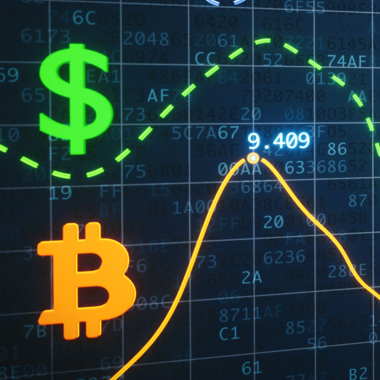
- Six minutes Lesen
Building trust during crypto downturns
2022 has certainly reinforced the old adage that the only constant is change; especially so in the crypto market. We commissioned independent* research amongst 2,000 crypto holders as the crypto downturn rocked the market and made headlines in the mainstream media. As alerts of losses and uncertainty went global, we were taking a pulse check of crypto holders’ thoughts and feelings.
This article is for information and solely educational purposes. It is not intended to be financial, investment or trading advice. This article does not protect against any financial loss, risk or fraud.
Luna’s collapse in May, followed by the Celsius bankruptcy and crypto hedge fund, Three Arrows Capital, collapse in June, were the start of what is proving to be a challenging year. The market capitalization of major coins continued to drop during this reset period. This led to many holders losing significant value in this volatile market and changed the narrative for crypto curious and new potential investors in the asset class.
It is communicated by all responsible providers that cryptocurrencies are subject to volatility and can go down as well as up. However, we thought it would be interesting to benchmark how these market dynamics impact crypto holder confidence – specifically in the midst of a trough.
So, we commissioned independent* research amongst 2,000 crypto holders in the USA and 1,000 in the UK. The research was conducted as the crypto downturn rocked the market and made headlines in the mainstream media. As alerts of losses and uncertainty went global, we were taking a pulse check of crypto holders’ thoughts and feelings.
The findings showed that despite being in midst of a ‘Crypto Winter’ and recent news about decreasing exchange volumes, trust in exchanges was actually up. In fact, many holders perceived exchanges as safer, more transparent and more secure following the introduction of Anti Money Laundering (AML) and Know Your Customer regulations. Following up on 2021’s momentum, many exchanges increased their regulatory and compliance investments by expanding their teams, getting more registrations and licenses granted by local competent authorities in key markets.
We believe, the question we must ask ourselves is how we as an industry can continue to empower consumers to make better-informed decisions about investment in digital assets? Trust must be both earned and respected, and in crypto, protected by appropriate regulation and responsibility.
Trust in crypto businesses grew despite the crash, outpacing banks
60% of cryptocurrency owners in both the UK and the USA reported that their trust in crypto exchanges had increased over the past year, a greater rise than their trust in banks (50%) or even in their country’s economy (46%). Many governments announced high and persistent inflation figures which, in my opinion, contributed to this interesting result.
A cynic might read these findings and rejoice. Cryptocurrency owners trust and invest in crypto regardless of circumstances. Great news, right?
To us, what this makes clear is the huge amount of responsibility all of us in the digital asset industry bear. When this level of trust is placed in the businesses which make purchasing, trading and holding crypto a possibility, it signals an urgent need for exemplary compliance, safeguarding and transparency at all levels.
At Paysafe, our foremost priority is the protection of our customers. As a fully registered and compliant entity, we understand, implement and encourage adoption of greater protections than required in many of the 90 or so markets where we enable crypto trading – and it seems like we’re not alone – consumers value this approach, too.
Regulation is the cornerstone of the future for digital assets
Elsewhere in our survey, we asked crypto owners whether they believed that crypto exchanges are more transparent and honest as a result of the introduction of AML and KYC regulations. More than two in three (67%) of crypto owners answered that they did.
Exchanges are developing, improving and growing all the time and we have already seen a great deal of progress in embedding compliance measures that improve alignment with the protection consumers have grown to expect from the traditional finance world. Crypto exchanges have become increasingly comfortable with investing the necessary resources required to comply with local regulations in key markets through registrations and licensing with local authorities.
Crypto owners were also asked if AML and KYC are making using cryptocurrency less risky. The result revealed that 65% of those surveyed believe that this is the case, signaling that further regulation could be essential to crypto’s future adoption.
The result is that 68% of crypto holders believe that the introduction of AML and KYC by many exchanges is making crypto safer for consumers to use.
Our findings in this survey confirm that the steps that exchanges are taking towards greater regulation and compliance align with consumer expectations and industry goals. This is an encouraging sign that investment in compliance is move in the right direction and a glimpse of what the future of crypto will look like as trust is built.
The key question is: what now? After a significant period of uncertainty in the market, what lessons can we as decision-makers take away?
Crypto literacy and education are priority one
Growth is great for the industry, but trust is fragile. AML and KYC are only part of a wider picture – crypto businesses have a duty to ensure consumers understand the risks to their capital, like volatility, the unregulated nature of most tokens and De-Fi projects.
In a market like this, learning from challenges is essential. We feel privileged to have taken the temperature of crypto owners during this time of uncertainty, helping us to better guide our customers and work with our peers on the next steps of their crypto journey.
Growing trust puts crypto education and financial literacy at the top of the industry agenda. As more trust and investment is placed in digital assets, it is essential that consumers have access to transparent and comprehensive education on every aspect of the industry. Helping consumers to understand and articulate the risks, as well as the possible advantages of digital assets and crypto investment, trade and ownership is not only the morally right thing to do – it is what consumers want.
The continued durability of consumer trust in crypto shows us that the asset class is here to stay. The right thing to do now is to empower consumers to make better-informed decisions about crypto investment. It is our job, and that of every other player in the digital asset industry, to ensure this occurs.
However, for crypto to fully serve the mainstream market, smart regulation must evolve that delivers equivalent protections to those that consumers expect from other financial asset classes or products, like stocks.
We must work together as an industry to achieve this and play our part in ongoing education and regulation. Only by doing this will we empower people to understand the risks and rewards that crypto delivers and make the decisions that are right for them.
*Survey methodology
The research, which gathered responses from 3,000 cryptocurrency holders – 2,000 in the US and 1,000 in the UK, was conducted online by Sapio Research between 8 - 14 June 2022 using an email invitation and an online survey. At an overall level, results are accurate to ± 1.8% at 95% confidence limits, assuming a result of 50%.




